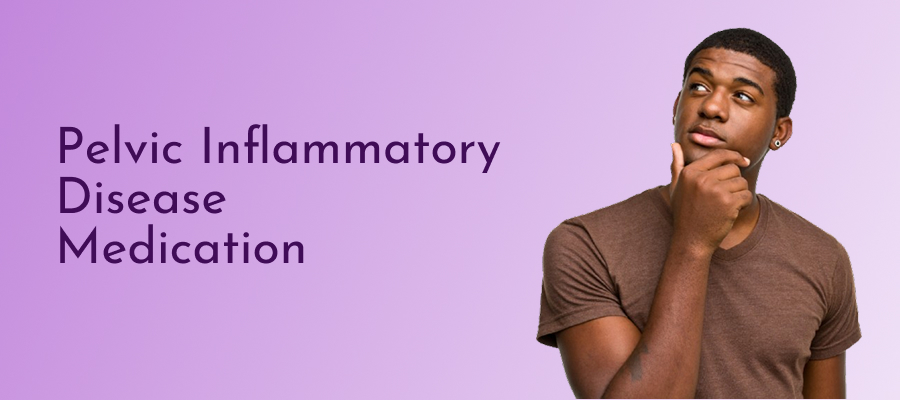ED Medication | Best Health and Wellness Blogs
Pelvic Inflammatory Disease Medication

Let’s get real—discussing pelvic pain, weird discharge, or what’s going on down there isn’t always simple. But it should be. If you’re experiencing pelvic inflammatory disease (PID) or suspect you are, you should get straight talk, honest answers, and a treatment plan that works. So, let’s get to it: what PID is, why it’s important, and most importantly—how it’s treated with meds.
What is Pelvic Inflammatory Disease?
Pelvic Inflammatory Disease (PID) is a disease of the reproductive organs in women. It typically begins when bacteria from the cervix or vagina travel up into the fallopian tubes, ovaries, or uterus.
Most of the time, it’s the result of a sexually transmitted infection (STI) such as gonorrhea or chlamydia, but not always.
And no, this isn’t something you can simply ignore. Untreated, pelvic inflammatory disease can cause chronic pelvic pain, infertility, or even life-threatening conditions like ectopic pregnancy.
Just a little. But the best part: PID is treatable—especially if diagnosed early.
Signs You Might Have Pelvic Inflammatory Disease in Men
- Lower abdominal or pelvic pain (that won’t quit)
- Strange vaginal discharge (particularly if it has an off smell)
- Painful sex
- Burning when you urinate
- Fever and chills
- Irregular menstrual periods or spotting between your cycles
Let’s Discuss Medication: What’s the Treatment Like?
1. Antibiotics Are the First Line of Defense
Once pelvic inflammatory disease is diagnosed, your doctor will start treatment immediately—even if test results aren’t back yet. Why? Because waiting increases the risk of complications. You’ll most likely get a combination of antibiotics, not just one.
Common medications for PID include:
Ceftriaxone (Rocephin): Usually a one-time injection. Targets gonorrhea and other bacteria.
Doxycycline: Oral antibiotic for 14 days. It’s central in combating chlamydia and other pathogens.
Metronidazole (Flagyl): Frequently added to provide cover for anaerobic bacteria (those that don’t require oxygen).
These medications can play with your stomach. Take them with food and complete the whole treatment, even if you feel better halfway through. Stopping treatment early is a big mistake and can create antibiotic resistance or a chronic infection.
2. Hospital Treatment
Not all need to be hospitalized—but in some cases, it’s needed, particularly if:
- You’re seriously ill (high temperature, vomiting, or symptoms of an abscess)
- Oral meds aren’t working
- You’re pregnant (PID during pregnancy is serious)
- There’s a chance it’s something else—like appendicitis or ectopic pregnancy
In the hospital, antibiotics are usually given through an IV for faster, stronger treatment.
3. Treating Your Partner
Even if your partner isn’t experiencing symptoms, he/must be treated as well. If they are infected with the bacteria, they can infect you again, essentially negating the entire point of being on antibiotics. Get them to get tested and treated ASAP.
And yes, no sex until you both finish treatment. Not up for debate.
Home Care and Lifestyle Tips During Treatment
Finishing your antibiotics is the biggest key, but getting better from PID isn’t all about the medication. This is how to get your body back in the game:
Rest: Your body’s fighting infection—it needs rest.
Stay hydrated: Water flushes out the toxins and keeps everything running smoothly.
Avoid sex until your doctor clears you.
Pain control: Over-the-counter medication such as ibuprofen can address cramping and swelling.
Follow-up visits: Even if you’re fine, don’t miss that follow-up visit after treatment. Your doctor must ensure the infection has cleared and there has been no long-term damage.
What If You Don’t Treat It?
Let’s be realistic: not treating PID isn’t a choice. The longer you wait, the worse it gets.
Potential complications include:
Infertility: Damaged fallopian tubes can prevent eggs.
Ectopic pregnancy: A fertilized egg implants outside the uterus (dangerous and potentially fatal).
Chronic pelvic pain: Ongoing pain that can affect your everyday life.
Abscesses: Pockets of infection that may require surgery.
None of that sounds fun, and all of it is preventable with proper treatment.
Prevention
Once you’ve been treated, the goal is not to deal with this again. A few solid prevention tips:
Use a condom: always, not just “most of the time.”
Get regular tests, particularly if you have new or multiple partners.
Keep partners to a minimum: The more partners, the greater the risk of STIs.
Don’t douche: it interferes with the natural bacteria balance in the vagina.
Bottom Line
Living with PID is stressful and unpleasant, but it’s more prevalent than folks realize. The important thing is to get treated quickly, do what your doctor tells you, and not be shy about discussing it. Your health isn’t something to be ashamed of—it’s something to guard.

